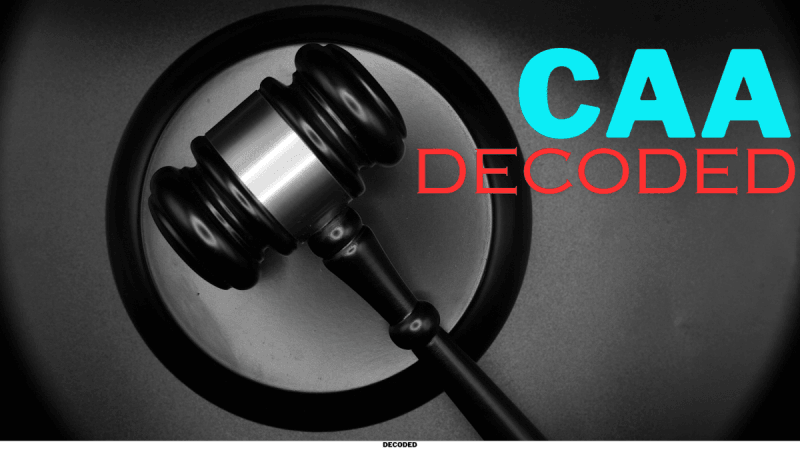
The Citizenship Amendment Act (CAA) of India, enacted in 2019, has been the subject of intense debate and scrutiny both domestically and internationally. As the dust settles, it becomes imperative to delve into the intricacies of this legislation, understanding its objectives, implications, and the broader socio-political context in which it operates.
Understanding the CAA: Intent and Objectives
At its core, the CAA aims to provide a legal pathway for citizenship to specific religious minorities who have faced persecution in neighboring countries. These communities, including Hindus, Sikhs, Buddhists, Jains, Parsis, and Christians, primarily from Afghanistan, Bangladesh, and Pakistan, are granted refuge under the CAA. It's crucial to note that the act does not seek to revoke citizenship from any existing Indian citizens, regardless of their religious affiliations, Centre for Integrated and Holistic Studies (CIHS) explained in its research paper.
The Humanitarian Imperative: Offering Sanctuary
The CAA's fundamental principle lies in upholding the values of religious freedom and equality, which are integral to India's secular fabric. By extending support to persecuted minorities, the CAA underscores India's commitment to providing sanctuary to those who have endured persecution solely based on their religious identity. This humanitarian imperative resonates deeply with India's ethos of inclusivity and compassion.
Addressing Historical and Ongoing Persecution
The selective focus on specific religious communities under the CAA is rooted in a nuanced understanding of the historical and contemporary challenges faced by religious minorities in neighboring countries. The act acknowledges the unique plight of these communities, particularly in Muslim-majority nations with historical ties to undivided India. By offering them a legal pathway to citizenship, the CAA seeks to expedite their assimilation into Indian society, providing them with a sense of belonging and security.
Controversy and Misinformation: Navigating the Discourse

Despite its objectives, the CAA has been marred by controversy and misinformation, both within India and on the global stage. Misconceptions surrounding the act have fueled protests and generated unwarranted hysteria, overshadowing its genuine intent. It's crucial to separate fact from fiction and engage in constructive dialogue to address concerns and misconceptions surrounding the CAA.
Contrasting Global Perspectives: Lessons from Abroad
Drawing parallels with similar amendments in countries like the United States, such as the Lautenberg Amendment, sheds light on commonalities in addressing the plight of persecuted minorities. However, it's essential to recognize the unique context of the CAA within India's socio-political landscape and its emphasis on historical ties and regional challenges.
Upholding Individual Rights: Ensuring Transparency and Accountability
In navigating the discourse surrounding the CAA, it's imperative to prioritize transparency, accountability, and the protection of individual rights. Upholding these principles is essential to fostering an environment conducive to informed debate and constructive dialogue.
Conclusion: Separating Fact from Fiction
In conclusion, the Citizenship Amendment Act (CAA) of India represents a nuanced response to the humanitarian imperative of providing sanctuary to persecuted religious minorities. While controversies and misconceptions abound, a deeper understanding of the act's objectives reveals its genuine intent to uphold principles of religious freedom and equality. By navigating the discourse surrounding the CAA with clarity and compassion, India can chart a path towards a more inclusive and harmonious society,

















